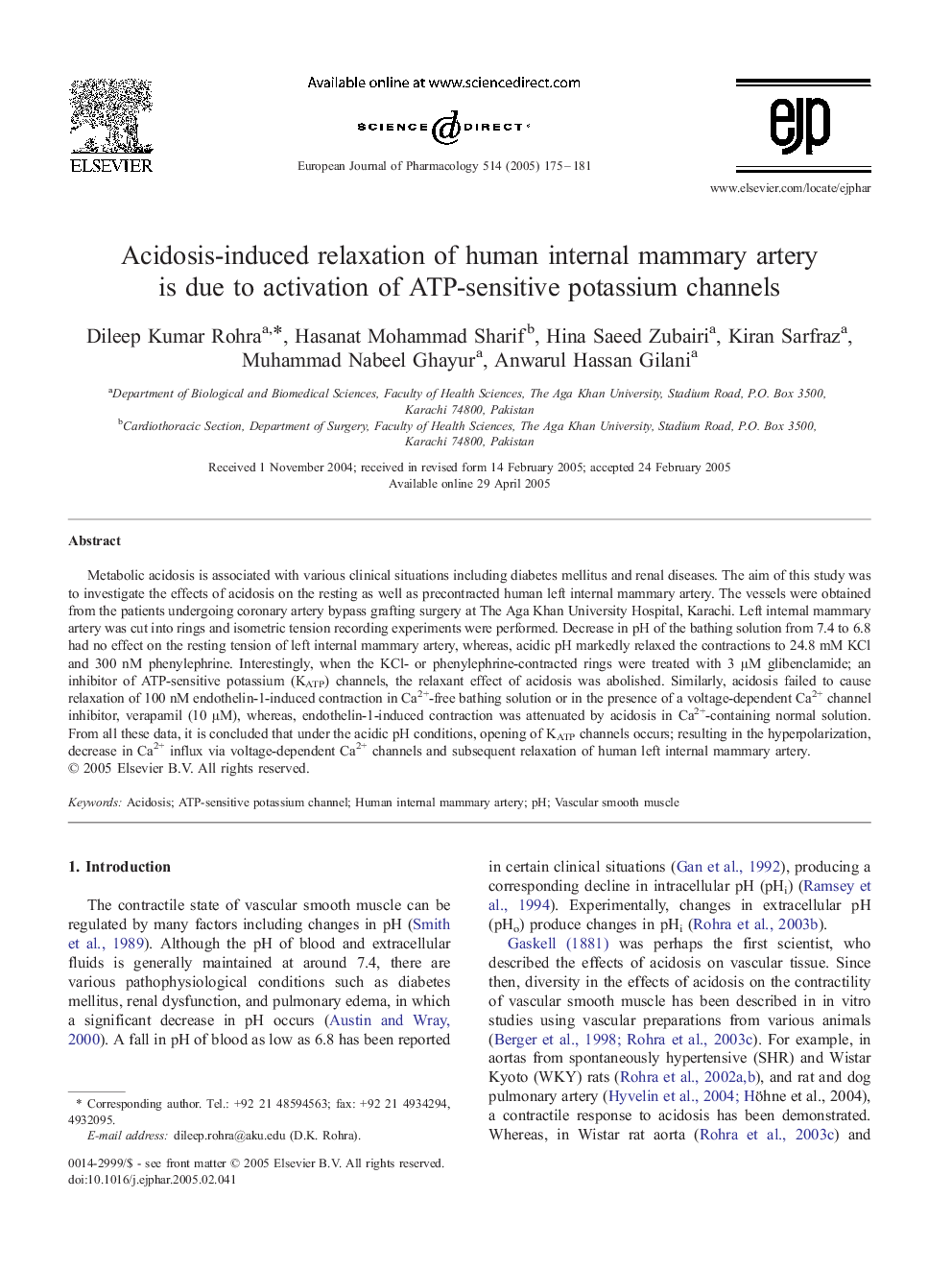| Article ID | Journal | Published Year | Pages | File Type |
|---|---|---|---|---|
| 9921333 | European Journal of Pharmacology | 2005 | 7 Pages |
Abstract
Metabolic acidosis is associated with various clinical situations including diabetes mellitus and renal diseases. The aim of this study was to investigate the effects of acidosis on the resting as well as precontracted human left internal mammary artery. The vessels were obtained from the patients undergoing coronary artery bypass grafting surgery at The Aga Khan University Hospital, Karachi. Left internal mammary artery was cut into rings and isometric tension recording experiments were performed. Decrease in pH of the bathing solution from 7.4 to 6.8 had no effect on the resting tension of left internal mammary artery, whereas, acidic pH markedly relaxed the contractions to 24.8 mM KCl and 300 nM phenylephrine. Interestingly, when the KCl- or phenylephrine-contracted rings were treated with 3 μM glibenclamide; an inhibitor of ATP-sensitive potassium (KATP) channels, the relaxant effect of acidosis was abolished. Similarly, acidosis failed to cause relaxation of 100 nM endothelin-1-induced contraction in Ca2+-free bathing solution or in the presence of a voltage-dependent Ca2+ channel inhibitor, verapamil (10 μM), whereas, endothelin-1-induced contraction was attenuated by acidosis in Ca2+-containing normal solution. From all these data, it is concluded that under the acidic pH conditions, opening of KATP channels occurs; resulting in the hyperpolarization, decrease in Ca2+ influx via voltage-dependent Ca2+ channels and subsequent relaxation of human left internal mammary artery.
Related Topics
Life Sciences
Neuroscience
Cellular and Molecular Neuroscience
Authors
Dileep Kumar Rohra, Hasanat Mohammad Sharif, Hina Saeed Zubairi, Kiran Sarfraz, Muhammad Nabeel Ghayur, Anwarul Hassan Gilani,
